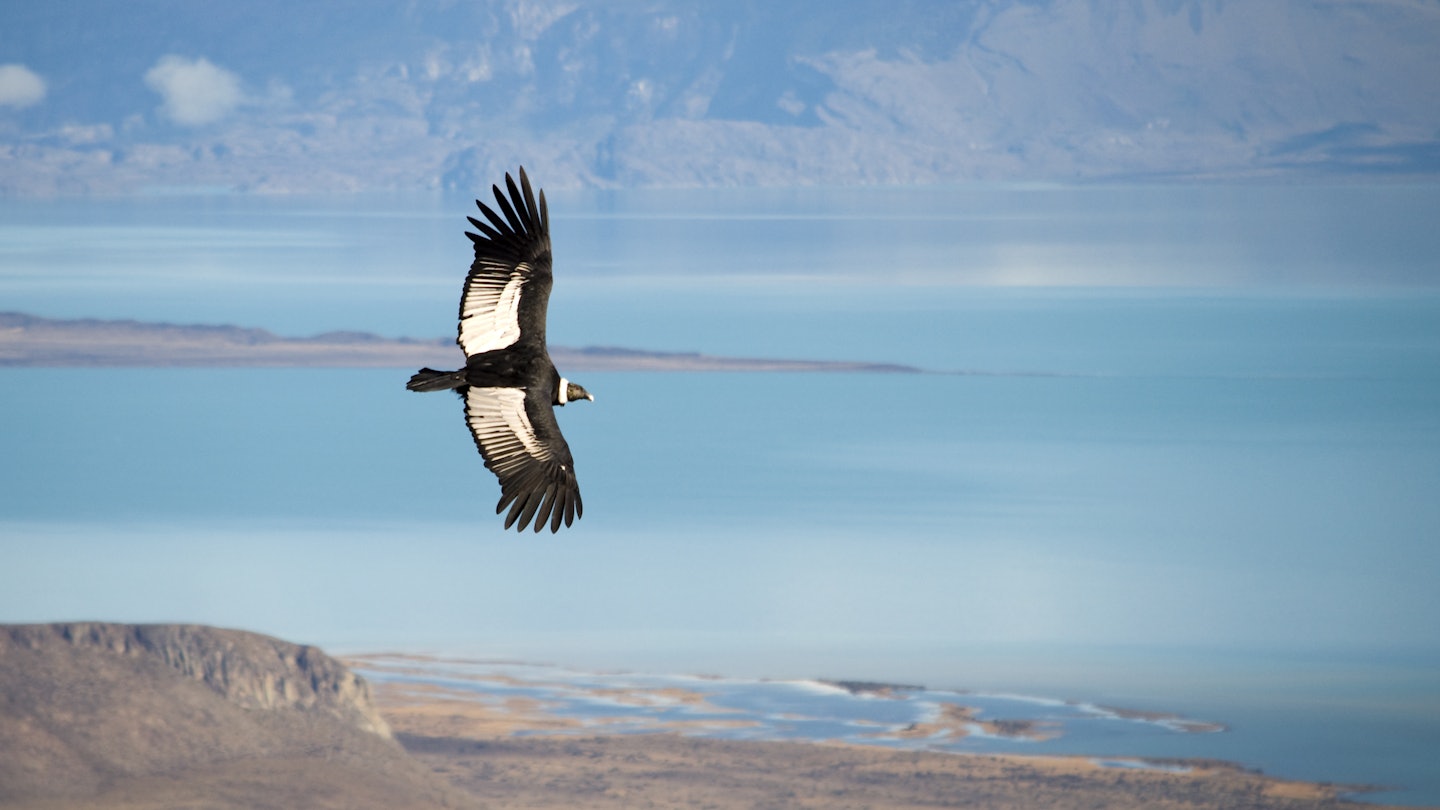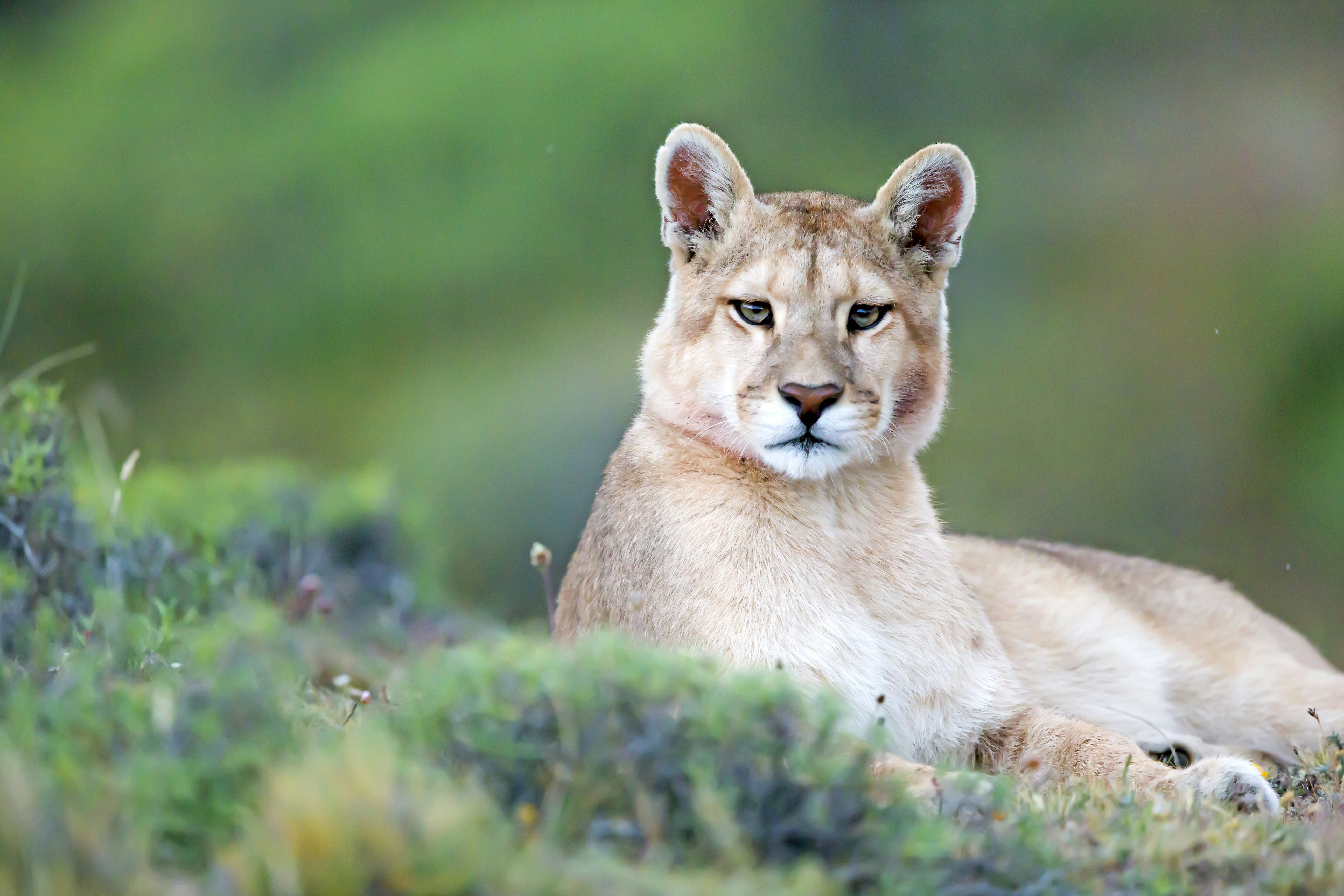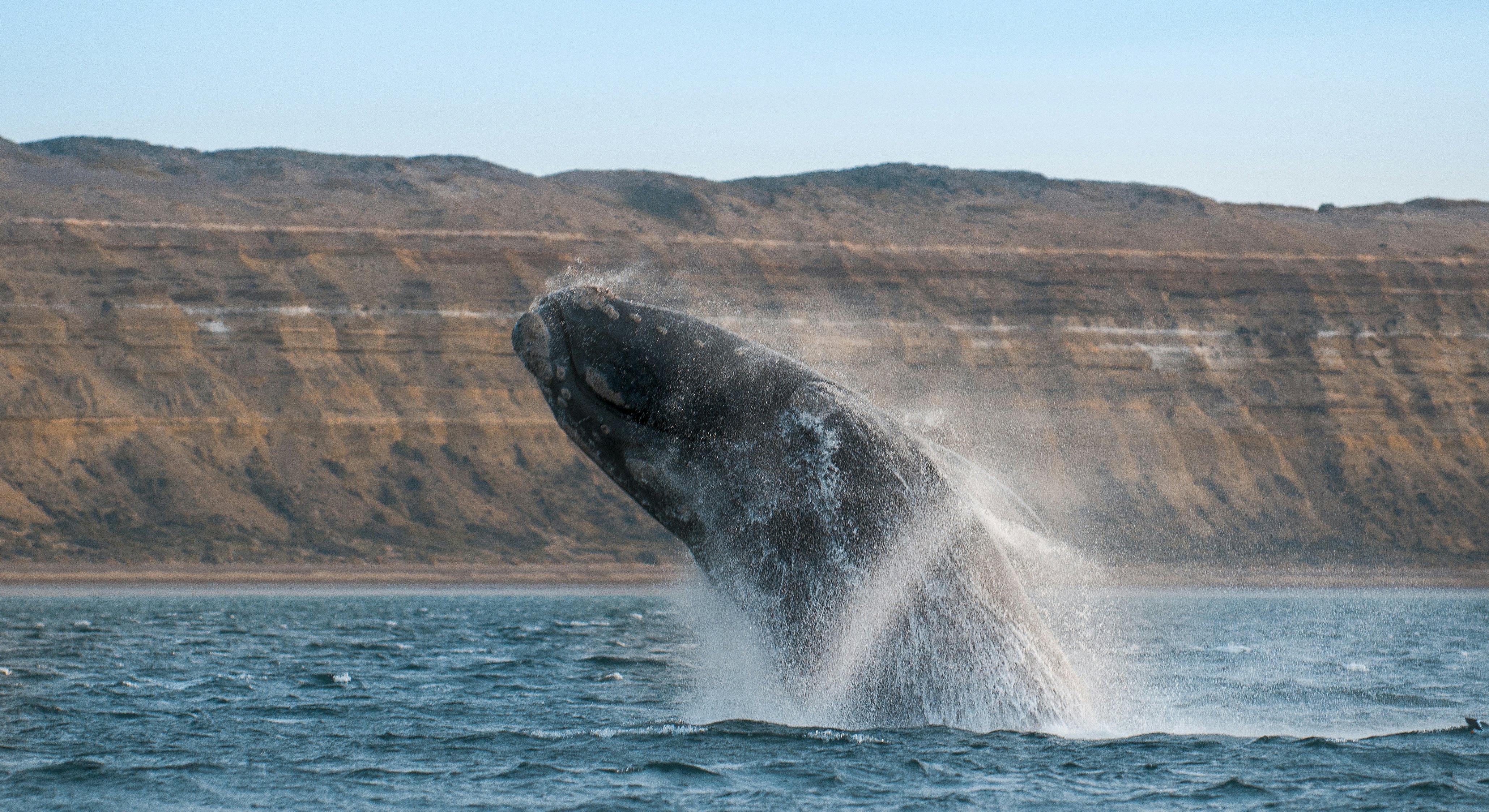
The 30 best countries, cities and regions to visit in 2025

Jun 29, 2024 • 9 min read

Go wildlife spotting with our guide to Patagonia's most iconic animals and birds, and where best to find them © rviard / Getty Images
Some of the largest and most unspoiled tracts of wilderness on Earth, Patagonia's temperate rainforests, towering mountain ranges, grasslands, fjords, lakes and rivers are home to more than 500 wildlife species, making it one of the most diverse and fauna-rich regions in South America.
Birdwatchers, wildlife photographers and wildlife lovers alike come to this vast natural playground in the hopes of spotting condors, penguins, guanacos, pumas, whales and other creatures, but Patagonia's harsh continental climate, challenging topography and the encroachment of estancias (ranches) on some habitats mean that some of the more elusive beasts may only be spotted in specific areas at specific times of the year.
Here's our guide to Patagonia's most iconic animals and birds and where best to find them.
The national bird of Bolivia, Chile, Colombia and Ecuador, the Andean condor is one of the largest birds on Earth, with a massive 3m (10ft) wingspan that puts it ahead of its Californian cousins in terms of sheer size. Contrary to popular belief that once saw them hunted by sheep ranch owners, condors are scavengers – giant vultures – rather than birds of prey, and thus not capable of carrying off livestock. Instead, they act as a clean-up crew, picking over the carcasses of dead animals.
Where to see them: Bald-headed, black, with distinctive white feathery patches on their wings, condors are most commonly spotted in the Andes, in Torres del Paine, Perito Moreno, Los Glaciares, Patagonia and Cerro Castillo national parks, where they take advantage of the strong air currents to keep themselves aloft. They live near the coast as well, where there are strong ocean breezes and are frequently spotted circling above Parque Nacional Monte de León.

Kenya and Tanzania have lions, India and Siberia have tigers, the Amazon Basin is home to the jaguar, and Patagonia has the puma. Once hunted almost to extinction, the Patagonian mountain lion has made a miraculous recovery over the past few decades, due to the protective measures in place and the numerous national parks teeming with food. The largest land carnivore in the region, the tan-colored puma is a powerful predator that can bring down prey much bigger than itself.
Where to see them: Puma spotting tops the list for most wildlife lovers, but since the big cats are nocturnal and shy, sightings are few and far between. The best place to see them is Parque Nacional Torres del Paine, where there's a large and thriving population, thanks mainly to an abundance of guanacos and wild horses. In fact, this writer spotted a very large puma while hiking there solo – an exhilarating yet terrifying experience, despite the fact that there have been no puma attacks on humans in Patagonia in decades. The big cats have also been seen at Parque Nacional Patagonia and Parque Nacional Los Glaciares.

A close relative of the domesticated llama and alpaca and South America's largest camelid (though without a hump!), the guanaco can be seen in large numbers in Patagonia year-round. A pale tawny color, with long, graceful necks and legs, huge eyelashes and soft lips adept at finding nourishment among Patagonia's thorny scrubland, guanacos are social, alert and inquisitive animals that tend to live in small herds, composed of up to ten females, a dominant male and their offspring. In winter, they band together in much larger groups.
The herds currently roaming Patagonia's steppe and forest represent a mere fraction of the guanacos that once inhabited these grasslands. Their numbers were severely depleted after the arrival of Europeans, and while it's no longer legal to hunt them, they still have to compete with sheep for food.
Where to see them: Guanacos are particularly numerous in Tierra del Fuego, where there are no pumas, but sightings are also frequent in Parque Nacional Monte de León – and pretty much guaranteed in Parque Nacional Torres del Paine, where they number at least 2000, and Parque Nacional Patagonia, known as the Serengeti of the Southern Cone. They share a habitat with the Patagonian armadillo, which like to burrow near lakes, and the swift-footed ñandú (rhea).

Four whale species can be seen in Patagonia's coastal waters: humpback whales, orcas, southern right whales and – very rarely – blue whales. From December to March, Whalesound and Solo Expediciones run dedicated whale-watching tours from Punta Arenas to Francisco Coloane Marine Park in the southern Chilean fjords, where humpback whales, en route between Antarctica and the Arctic, stop to feed and perform their spectacular breaching displays.
Where to see them: Orcas can be spotted around Argentina's Peninsula Valdés, hunting seals and sea lions, but you're much more likely to catch sight of endangered southern right whales – between April and December, more than 2000 of them come to the sheltered bays around the peninsula to breed and raise their young. Regular boat trips depart from the village of Puerto Pirámides.
During these boat trips, you're also likely to see dusky dolphins – small, playful dolphins that like swimming in the wake of boats and engaging in acrobatic displays, leaping high above the water. The black-and-white Commerson's dolphin is very frequently seen during routine ferry crossings of the Magellan Strait, from mainland Patagonia to Tierra del Fuego; small pods often follow the ferry. As for the world's largest mammal? With luck on your side, you could spot a blue whale if you happen to be on a ferry in northern Chilean Patagonia, en route to the island of Chiloé. There have been occasional sightings in the Gulf of Corcovado as well.

Adorably cute, extremely agile and looking like a cross between a large rabbit and a chinchilla with a longer, curlier tail, vizcacha (sometimes translated as "bunny-squirrel") are usually spotted bounding up steep slopes. Reddish-gray in color and blending in well with their mountainous habitat, these large rodents are endemic to South America and live in large burrowing colonies.
Where to see them: In southern Chile, you're likely to spot them among the lunar landscape of Reserva Nacional Jeinimeni, while in Argentina, the plains vizcacha inhabiting the pampas are seen as pests that compete with livestock for food.

Native to the mountains and periglacial scrubland of southern Chile and Argentina, the huemul is a notoriously shy deer that's critically endangered – there are only 1500 or so left in the wild, the majority of them in Chile. The stocky southern deer is Chile's national animal; it even appears on the country's coat of arms, alongside the condor.
Where to see them: You would be incredibly lucky to spot one, though there have been occasional sightings in Parque Nacional Patagonia, Parque Nacional Torres del Paine and Reserva Natural Los Huemules. The latter is a private nature reserve in southern Argentina, near El Chaltén; its founders hope that habitat preservation and scientific study will help increase the deers' numbers.

When we think of flamingos, we usually think of the tropics, and Patagonia seems an unlikely home for these graceful stilt-legged birds. Paler than the Caribbean flamingo but pinker than the Greater flamingo, Chilean flamingos live in large flocks.
Where to see them: Chilean flamingos are often spotted during the southern summer on the approach to Parque Nacional Torres del Paine – a flash of pink in the shallows of the pale-blue Laguna Amarga. They also inhabit the lakes and lagoons of Parque Nacional Patagonia; if you're driving through the Chacabuco Valley in the direction of the border with Argentina, you can see them in large numbers at Laguna Seca.

What's black and white and outnumbers Patagonia's human inhabitants almost two to one? If you've answered "penguin," you're absolutely right! From October to April, Patagonia hosts around 3.4 million Magellanic penguins as they swim back to their burrows from the coast of Brazil to nest and lay eggs. Chicks hatch in November and December, so if you visit then, you're likely to get glimpses of these beaked balls of fluff.
Where to see them: The biggest Magellanic penguin colonies are in Punta Tombo, Argentina, reachable via driving or tour bus, and Isla Magdalena, Chile, accessed via half-day boat tours operated by Turismo Comapa, from Punta Arenas. The Magellanic penguin is by far the most common penguin you're likely to spot along Patagonia's coastline.
That said, further south, Isla Martillo – in the Beagle Channel near Ushuaia, reachable via boat tour with Tangol Tours – is also home to Gentoo penguins, while rockhopper penguins can be seen along the coast east of Argentina's Puerto Deseado. There's also a small king penguin colony on the main island of Tierra del Fuego, near Bahía Inútil, that's grown in size over the past few years, and it's the only place outside the Falklands, South Georgia and Antarctica where you can actually see these magnificent birds. Chile Nativo runs full-day tours from Punta Arenas.
In 1946, the Argentinian military came up with the bright idea of importing ten pairs of Canadian beavers from Manitoba and letting them loose in Tierra del Fuego, in the hopes of kicking off a lucrative fur trade and attracting more settlers to the sparsely populated southernmost region. With no natural predators to hold them back, the beaver population spread like wildfire, with numbers estimated between 70,000 and 100,000 today, and caused as much damage to Fuegian forests as wildfires.
Where to see them: If you're looking to spot these industrious water-loving rodents, you're likely to come across their dams and large stretches of ghost forest where thriving lenga (southern beech) used to grow – particularly if you go trekking on Chile's Isla Navarino or take to the hiking trails in Parque Nacional Tierra del Fuego near Ushuaia.
Wildlife spotting in Patagonia is really easy, and unless you've got pumas or huemuls on your bucket list, you don't even need a dedicated guide to make it happen. You're likely to see ñandú (rhea) while driving Patagonia's traffic-light roads; guanacos and endemic birds, such as the Magellanic woodpecker and rufous-tailed hawks, while hiking the trails of national parks and nature reserves; and a wealth of sea birds, seals and sea lions just by visiting Chile's and Argentina's coastlines.
However, if you're coming to Patagonia specifically to see the region's rarer and harder-to-spot creatures, it's worth looking into multiday wildlife safaris offered by operators such as Chile Nativo, Swoop Patagonia, EcoCamp Patagonia, Eagle-Eye Tours, and Far South Expeditions, to name a handful of reputable outfitters.
Plan with a local
